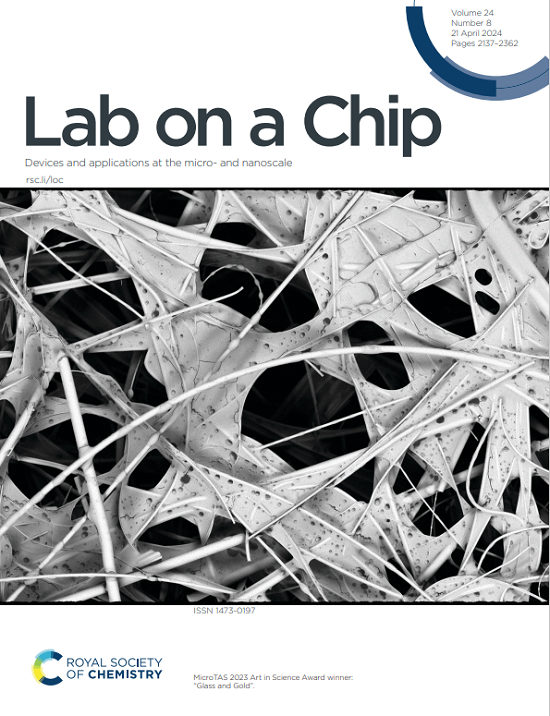用于实时分析肠-血管-神经轴氟端粒醇毒性的集成微流控三器官芯片。
IF 5.4
2区 工程技术
Q1 BIOCHEMICAL RESEARCH METHODS
引用次数: 0
摘要
全氟烷基物质(PFASs)是与神经发育毒性有关的持久性环境污染物,由于无法再现多器官相互作用,传统的体外系统无法充分模拟。为了解决这一限制,我们开发并设计了一种三器官肠-血管-神经轴芯片,通过集成的内皮屏障重建肠-脑双向通信。与d-聚赖氨酸板上分散的2D培养不同,我们的3D平台支持交联的神经突生长,自组装的微血管管和紧密密封的肠上皮,再加上集成的固相萃取-质谱法,用于实时跟踪PFAS动态。我们证明肠上皮细胞将氟端粒醇代谢为具有生物活性的氟端粒羧酸,这些羧酸可能通过血管通道进入神经室,诱导神经元功能障碍并驱动代谢活性、氧化应激反应和炎症信号的全轴改变。这个生理学相关的模型为PFAS神经毒性提供了新的机制见解,并为环境毒理学建立了一个强大的器官芯片范式。本文章由计算机程序翻译,如有差异,请以英文原文为准。
Integrated microfluidic three-organ chip for real-time toxicity analysis of fluorotelomer alcohols in the gut-vascular-nerve axis.
Perfluoroalkyl substances (PFASs), persistent environmental contaminants linked to neurodevelopmental toxicity, cannot be adequately modeled by traditional in vitro systems due to their inability to recapitulate multi-organ interactions. To address this limitation, we developed and engineered a tri-organ gut-vascular-nerve axis chip that reconstructs the bidirectional gut-brain communication through an integrated endothelial barrier. Unlike dispersed 2D cultures on D-polylysine plates, our 3D platform supports cross-linked neurite outgrowth, self-assembled microvascular tubules, and a tightly sealed intestinal epithelia, coupled with integrated solid-phase extraction-mass spectrometry for real-time tracking of PFAS dynamics. We demonstrate that intestinal epithelial cells metabolize fluorotelomer alcohols into bioactive fluorotelomer carboxylic acids, which may transit vascular channels to neural compartments, inducing neuronal dysfunction and driving axis-wide alterations in metabolic activity, oxidative stress responses, and inflammatory signaling. This physiologically relevant model provides novel mechanistic insights into PFAS neurotoxicity and establishes a robust organ-on-chip paradigm for environmental toxicology.
求助全文
通过发布文献求助,成功后即可免费获取论文全文。
去求助
来源期刊

Lab on a Chip
工程技术-化学综合
CiteScore
11.10
自引率
8.20%
发文量
434
审稿时长
2.6 months
期刊介绍:
Lab on a Chip is the premiere journal that publishes cutting-edge research in the field of miniaturization. By their very nature, microfluidic/nanofluidic/miniaturized systems are at the intersection of disciplines, spanning fundamental research to high-end application, which is reflected by the broad readership of the journal. Lab on a Chip publishes two types of papers on original research: full-length research papers and communications. Papers should demonstrate innovations, which can come from technical advancements or applications addressing pressing needs in globally important areas. The journal also publishes Comments, Reviews, and Perspectives.
 求助内容:
求助内容: 应助结果提醒方式:
应助结果提醒方式:


